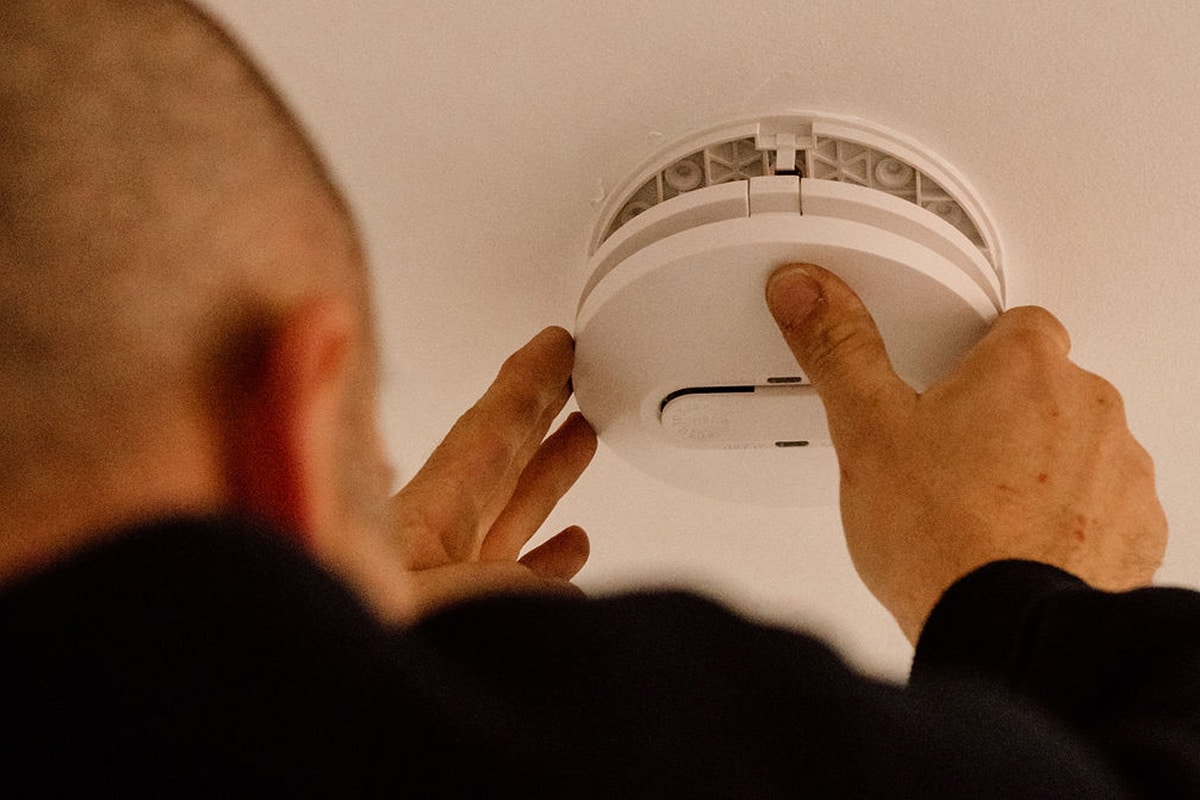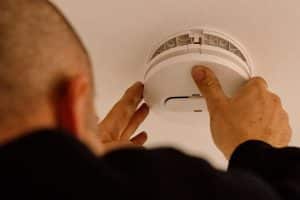As our reliance on electronic appliances and devices increases, so do the risks of electric fire. We can unwittingly overload our household circuits by using too many at the same time. This overheats the wiring – a leading cause of fire. And as we use more electrical connections, this introduces more possibilities for electric shorts. The lithium-ion batteries in devices like smartphones can also start fires by themselves. They pack huge energy density and some of their components are flammable.
Electric fires are often invisible until it’s too late. They start quietly and spread silently, often in parts of your house infrastructure that you can’t see, like inside your ceiling. By the time you realise it, they can already have caused major damage and pose an immediate threat to your safety. So it’s vital to understand the most common causes of household electric fires and to do the right things to prevent fires from happening in your home.
Plenty of the older Melbourne homes also still have outdated wiring materials, which creates a very precarious situation, ripe for electric fires to break out where the wiring has been degraded. Those attractive Victorian terraces with their mid 20th-century weatherboards may be great places to live, but their electrical circuitry could be an accidents waiting to happen.
Your First Defence: Regular Electrical Inspections
You can’t really take any proactive measures to prevent home electrical fires if you don’t have a clear picture of your current circuitry. So the first thing to do is schedule an inspection by a qualified, certified fire electrician. These are the only people qualified for this in Melbourne. Fire electricians are specially trained to detect any type of fire hazard in your home electrical system. They look for things like unstable connections, switchboard problems and frayed wiring.
The fire electrician will test your switchboard, including checking that circuit breakers work properly. The same goes for residual current devices (RCDs), also called safety switches. These help prevent shocks and electrical fires. They will look for any signs of heat damage or corrosion in your circuitry as well.
Upgrading Older Switchboards and Wiring
Melbourne homes built before the 1980s will often have old wires and outdated switchboards that weren’t built to cope with all the modern electrical devices we use. They also weren’t designed to support modern high-wattage systems and appliances. If you use them simultaneously, the risk of circuit overload increases, which can lead to an electric fire. Not only that – the actual materials may be hazardous too. Ceramic fuses and aluminium wiring are now outdated and considered potentially dangerous, for instance. They’re especially vulnerable to power surges.
Call in a fire electrician to inspect everything and recommend what you need to have upgraded or rewired. Installing modern surge protection and circuit breakers will significantly improve the safety in these homes.
Preventing Circuit and Switchboard Overload
One of the most common causes of electrical fires at home is placing to much demand on the circuitry by using too many double adaptors and power boards off a single wall plug point. This tends to happen in winter, when people run more high-wattage appliances. Overloaded power boards can overheat, igniting flammable materials inside. The cheaper the model, the more likely that this will happen.
You can easily prevent this. Don’t daisy-chain your power boards by plugging one into another to create longer reach. This is a recipe for disaster, especially if you’re powering high-wattage appliances at the end of the chain. By plugging each appliance directly into its own wall outlet, you can eliminate overload and prevent fires from happening in your home. If necessary, get an electrician in to install more wall power points to handle all your various appliances safely.
Appliance Maintenance and Replacement
Faulty or damaged appliances are among the leading causes of electric fires in Melbourne homes. Loose internal wiring, frayed power cords and internal faults can cause overheating. If you leave them unattended, this can develop into sparking that can set off a fire. The risk increases during winter, when we use more heating appliances like portable electric heaters and electric blankets.
To mitigate against this, regularly check your appliances for signs of damage. Check that the power cords are intact and look for burn discolouration around the plug point. If you see anything out of the ordinary, stop using the appliance immediately and have it checked and repaired if necessary. Don’t attempt these repairs yourself. You’re not only unqualified; it’s illegal to do this yourself without a proper licence issued by the State of Victoria.
Fire Safety Tools and Smoke Alarms
You can bolster your home fire protection by installing early warning systems and keeping the right equipment in your house. Smoke alarms play a critical role in detecting hidden fires that you wouldn’t notice until they’ve spread. Photo-electric smoke alarms are the most effective, as they can be triggered by the smouldering of a small electrical fires as it starts. This will give you a critical head start to get your family to safety and call for help before any major damage is done.
An electrical fire extinguisher is your best defence should an electric fire actually break out. A traditional fire extinguisher will only make things worse, as the chemicals they use can conduct electricity. And don’t ever try to put out an electrical fire with water. Not only won’t it work, but you risk electrocution if you step into the water on the floor because water is an excellent conductor of electricity. An electrical fire extinguisher contains materials specifically created to smother electrical fires. Get yourself a Class E-rated extinguisher and keep it in a quickly accessible place in your house.
Tip: If you are fighting an electrical fire, where would you aim the fire extinguisher?
Aim the nozzle at the base of the fire, which is where the main fuel source is. This is the fastest way to nullify the fire by depriving it of the flammable material it feeds on. Don’t aim at the flames – it won’t help much because they’ll just be replaced by more.
Protect Your Wiring and Cables
One of the easiest ways to prevent electrical fires is to regularly check your appliance cables. Extension cord cables can become twisted. This increases the electrical resistance at the kinks, which can cause overheating and fire. They can also become pinched under furniture with the same effect. Constantly bending them can cause fatigue and failure. Also make sure that the cables aren’t anywhere near heat sources. Try not to run cords under carpets for the sake of neatness, as walking over them can cause degradation over the long-term. It’s best to clip them to your skirting boards.
Qualified and Certified Fire Electricians in Melbourne
STL Electrical can look after all aspects of electrical fire prevention for you. Our fire electricians are fully qualified and certified by Victorian authorities. We can do full electrical system inspections to identify vulnerabilities, and do all the necessary repairs and replacements, from replacing frayed wires to installing new switchboards, wall sockets and smoke alarms. For fire protection that gives you peace of mind, contact us wherever you are in the Melbourne area.




